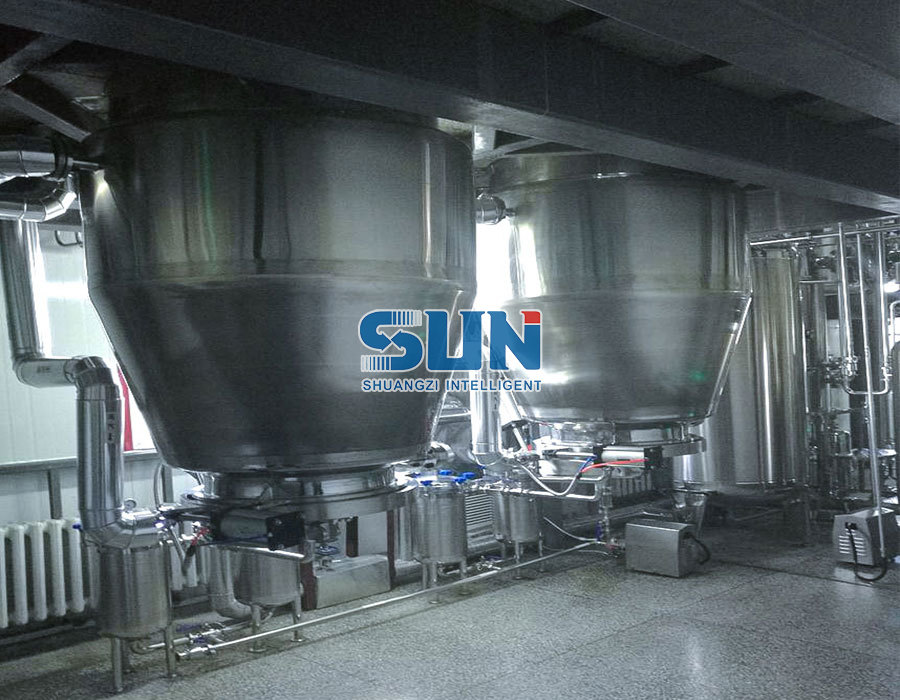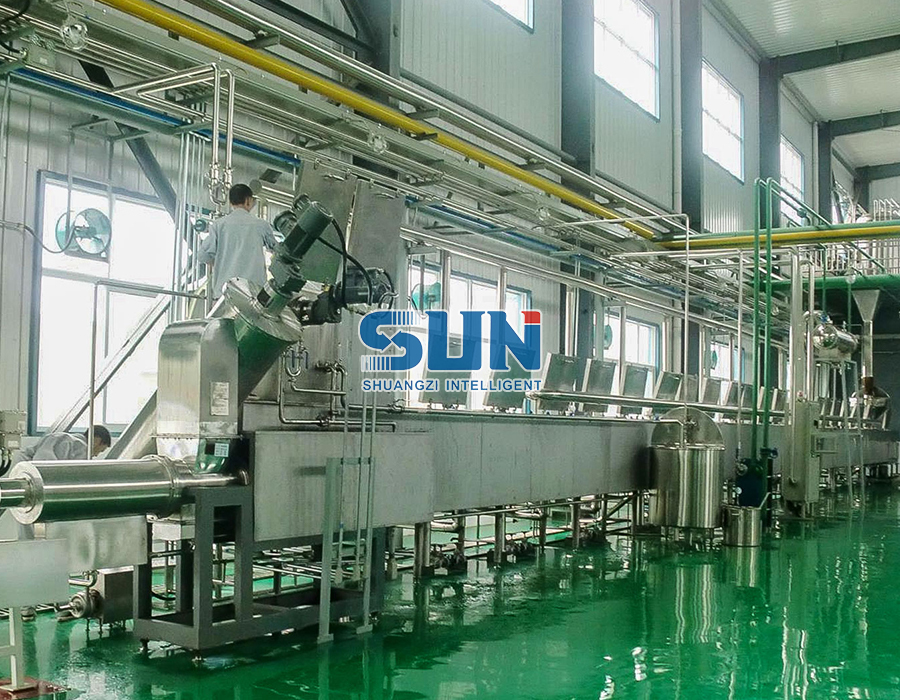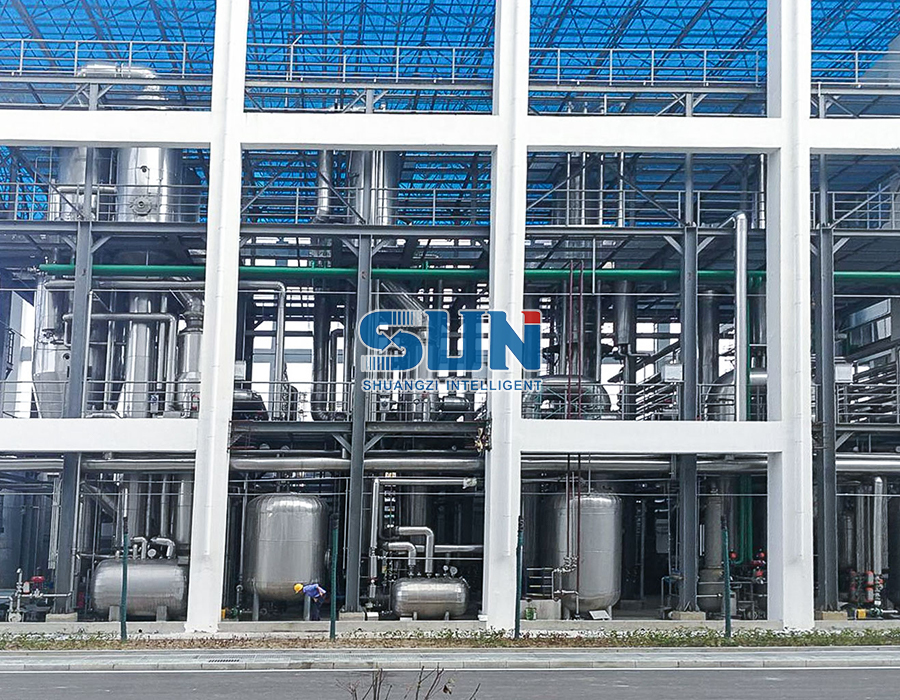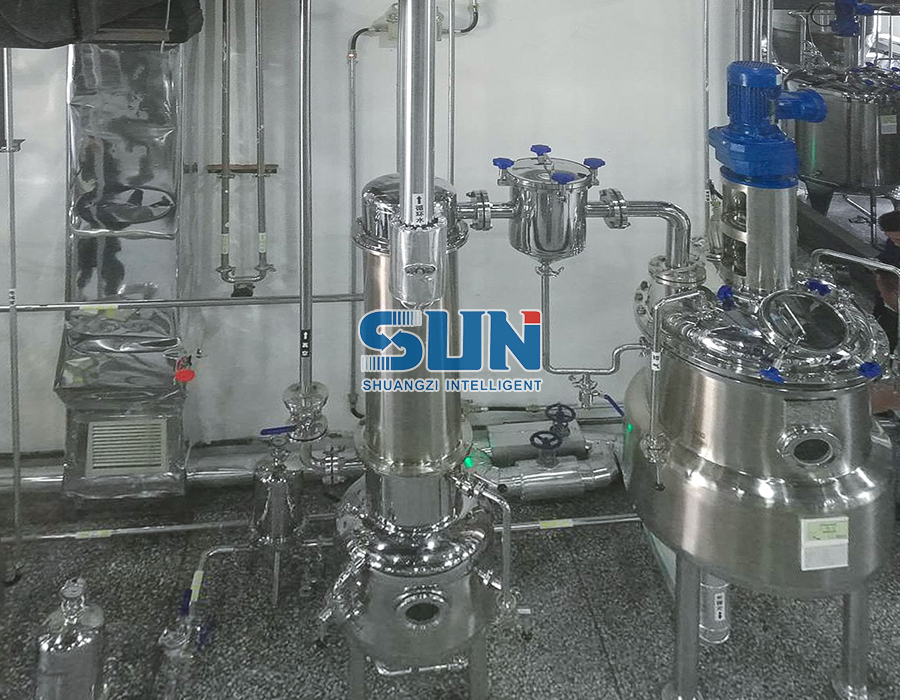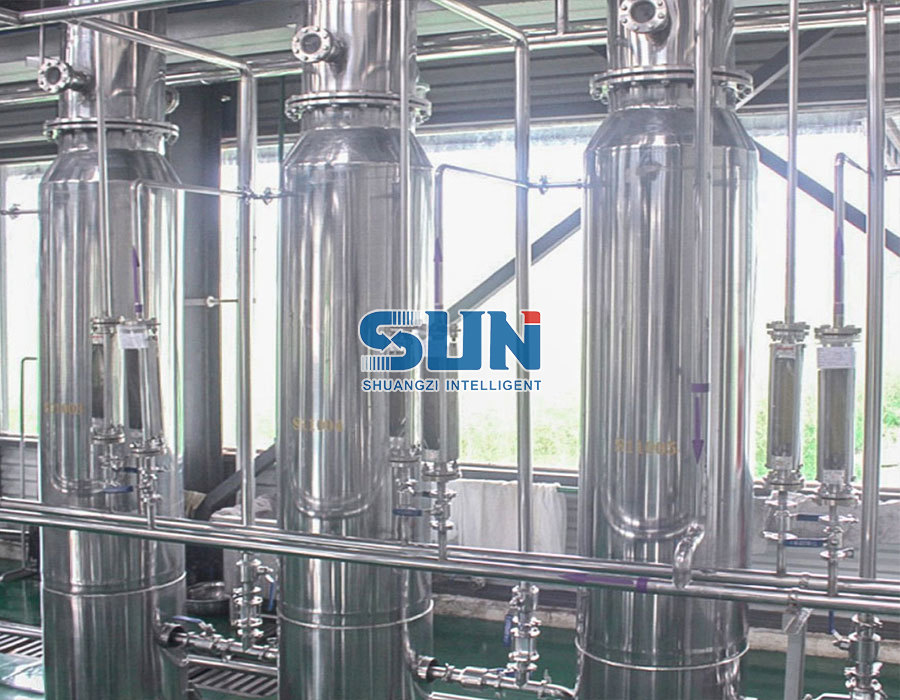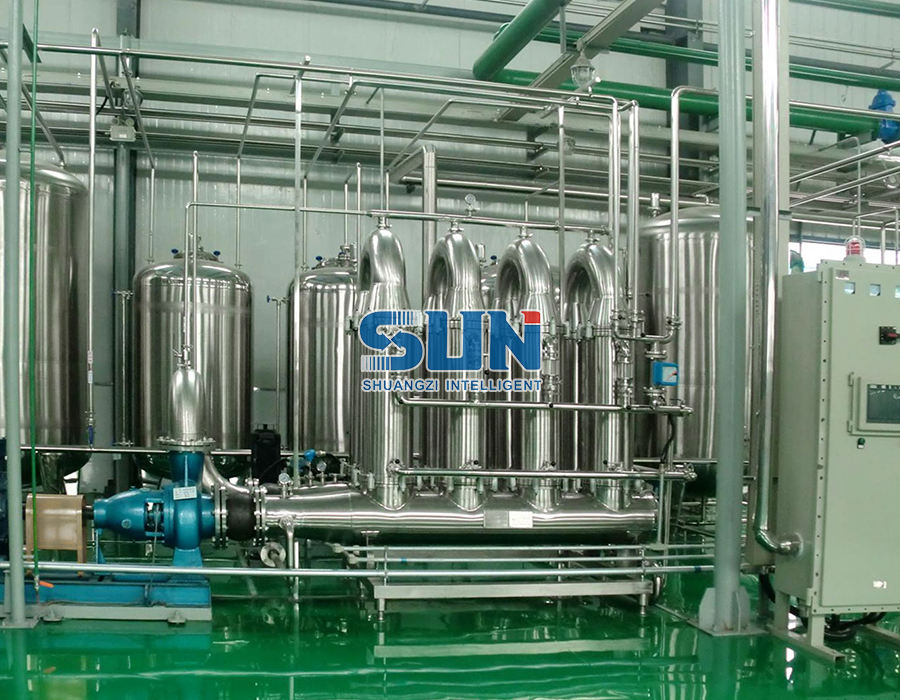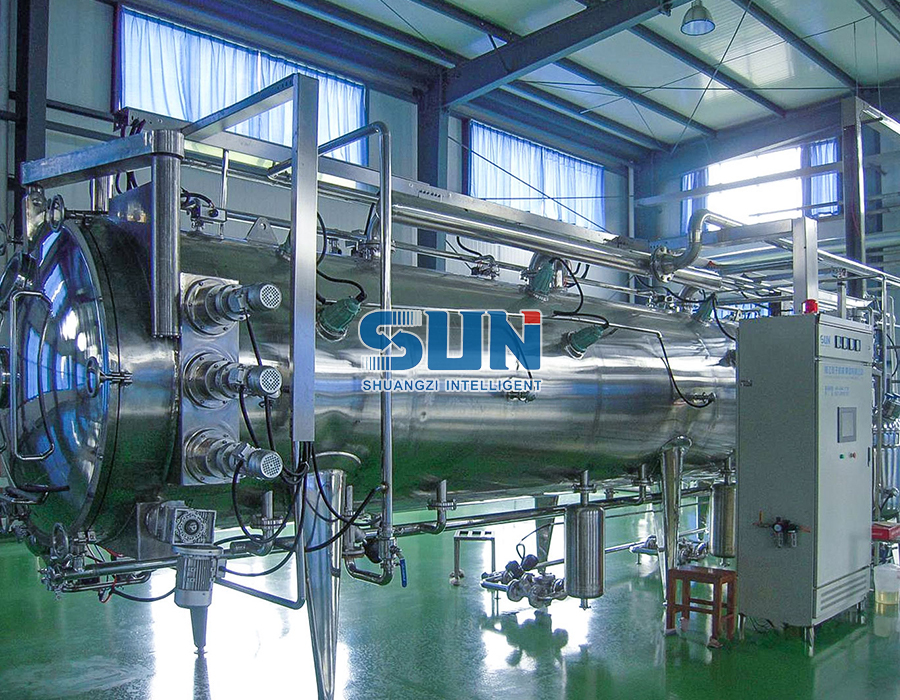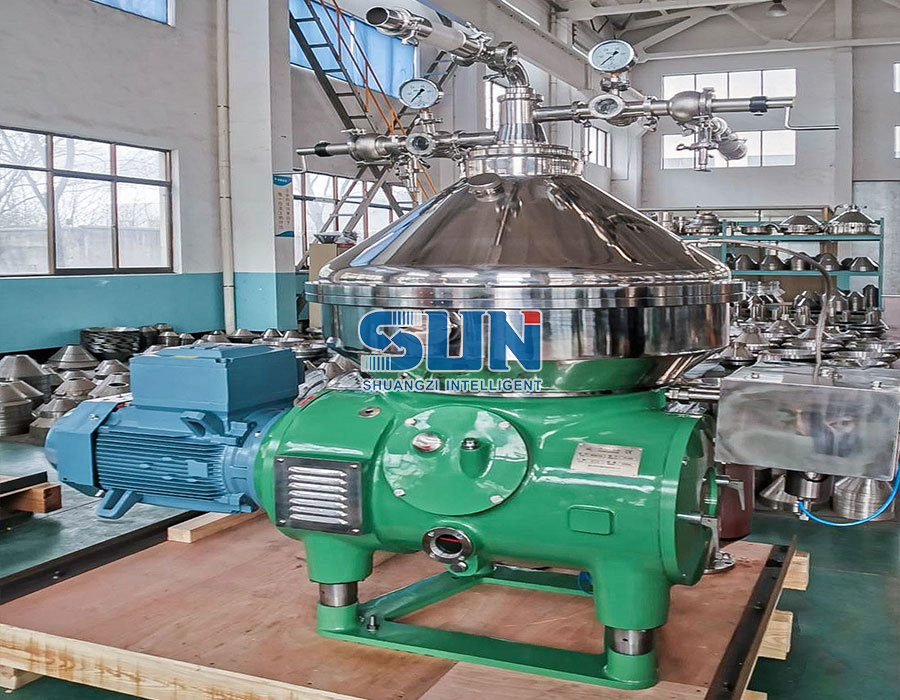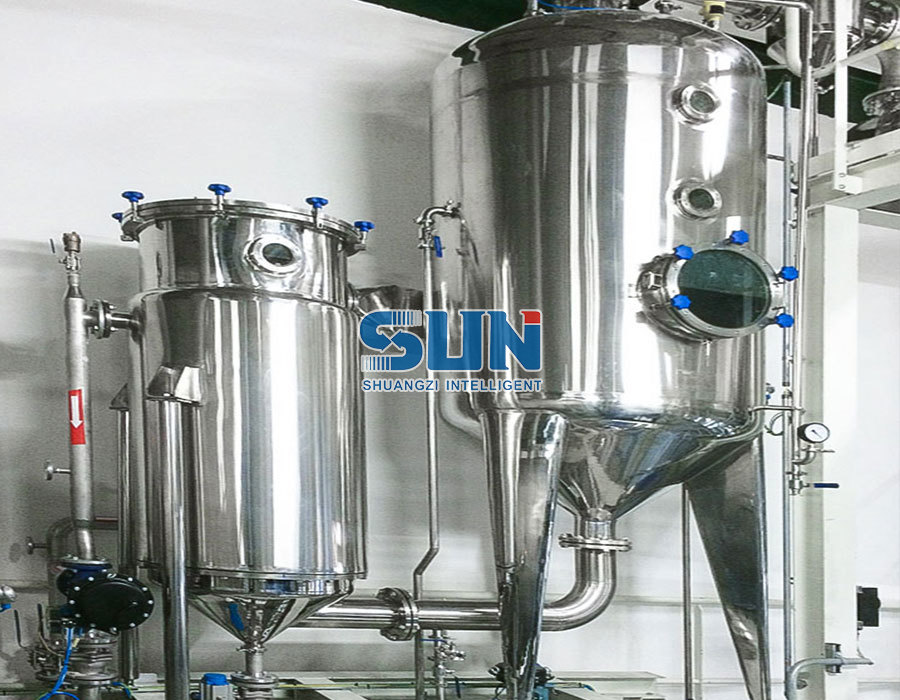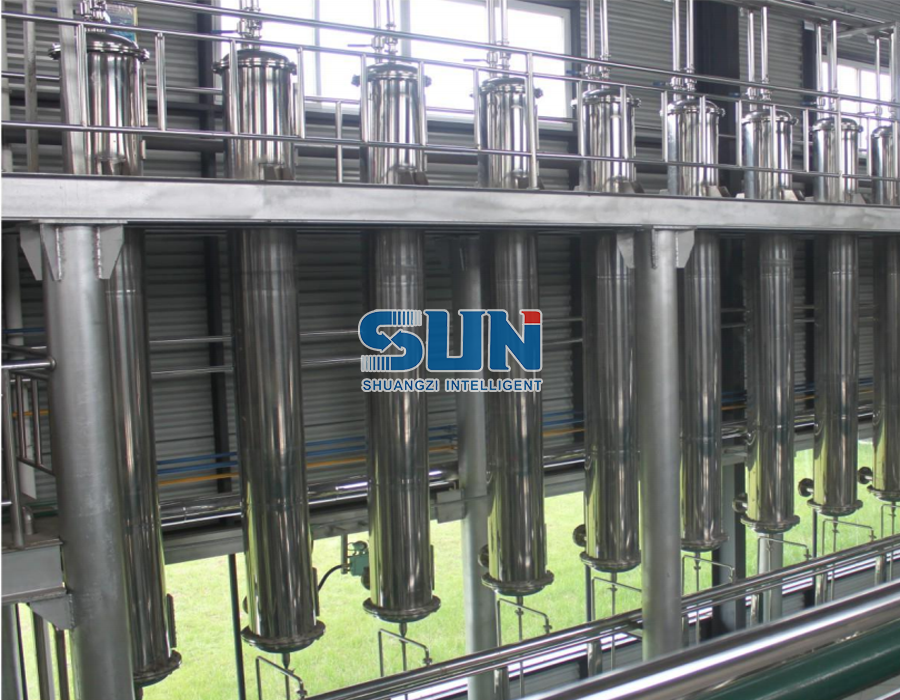An alcohol recovery tower, also known as a distillation column or fractionation tower, is a key component in the process of separating and purifying alcohol from a mixture. It operates based on the principle of distillation, which takes advantage of the different boiling points of various components in a mixture to achieve separation.
Here's a simplified explanation of how an alcohol recovery tower works:
Mixture Introduction: The mixture containing alcohol and other substances, such as water and impurities, is introduced at the base of the tower.
Heat Application: Heat is applied to the base of the tower, typically through reboilers or other heat sources. This heat causes the mixture to vaporize.
Rising Vapor: The vaporized mixture rises through the tower, encountering a series of trays or packing materials inside the column. These trays or packing materials provide a large surface area for the vapor to come into contact with liquid.


Tray or Packing Interaction: As the vapor ascends, it interacts with the liquid on each tray or within the packing material. This interaction allows for the transfer of heat and mass between the vapor and liquid phases.
Separation: The different components in the vapor mixture have different boiling points. As the vapor rises and cools, certain components with lower boiling points, such as alcohol, tend to concentrate in the vapor phase, while higher boiling point components, such as water and impurities, tend to remain in the liquid phase.
Condensation: At the top of the tower, the vapor reaches a cooler section or condenser. The vapor cools down and condenses back into a liquid form.
Collection: The condensed liquid, which is now enriched in alcohol, is collected as the desired product. This alcohol product may still contain some traces of other components, depending on the level of purity required.
Side Stream Withdrawal: Additionally, there are often side streams or side draw-offs located at different heights along the tower. These side streams allow for the extraction of intermediate products with varying concentrations of alcohol. They can be further processed or utilized based on specific requirements.
The efficiency and effectiveness of an alcohol recovery tower depend on factors such as the design of the column, the selection of tray/packing materials, heat management, and the optimization of process conditions. Industrial distillation columns can be quite complex, with multiple sections and additional features to enhance separation efficiency.


 英语
英语 俄语
俄语